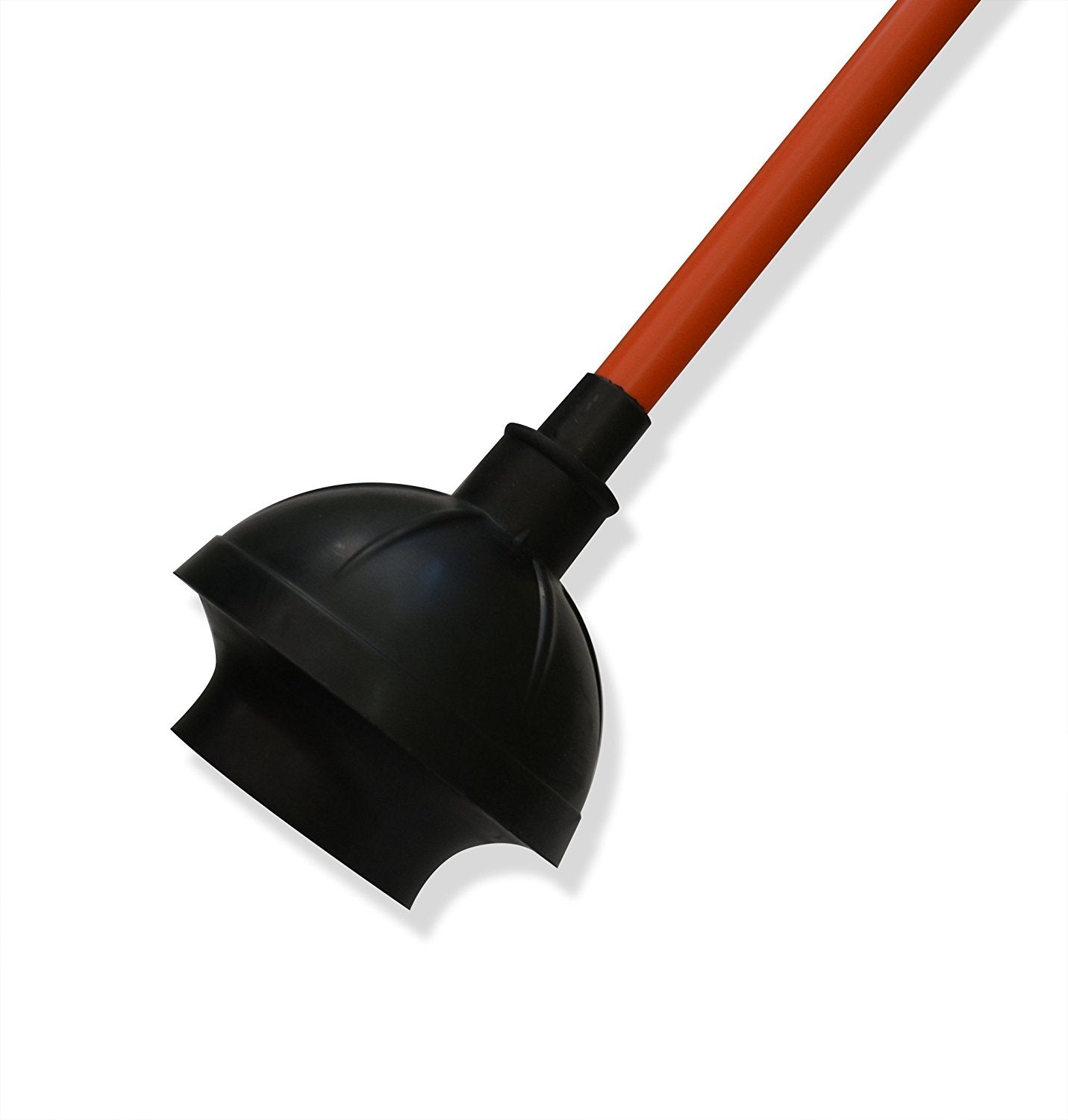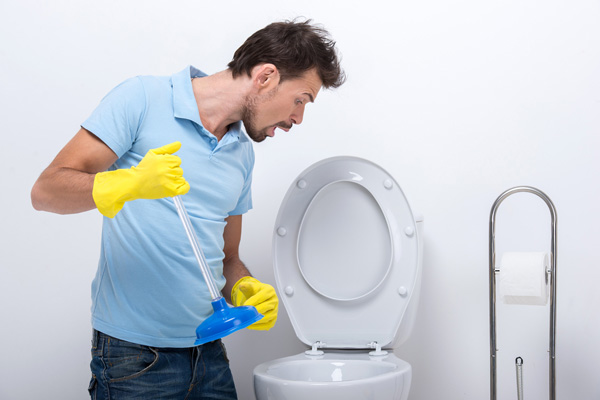Mastering Plunger and Drain Cleaner: Pro Methods
Mastering Plunger and Drain Cleaner: Pro Methods
Blog Article
Almost everyone seems to have his or her own idea when it comes to A Guide to Plungers (and How to Use Them).

Intro
Proper maintenance of household drains pipes is necessary for avoiding obstructions and ensuring smooth water flow. Among the key tools in every homeowner's toolkit is the bettor, alongside different drainpipe cleansers developed to take on stubborn obstructions effectively. This post checks out just how to utilize bettors and drainpipe cleansers effectively to maintain your drains pipes streaming easily.
Area 1: Comprehending Plungers
Types of Plungers
There are several types of bettors readily available, each created for different types of drains and obstructs. One of the most common types consist of mug bettors, flange plungers, and accordion bettors.
Exactly How Plungers Job
Bettors work on the concept of producing stress and suction to remove obstructions. When appropriately applied over a drain, they produce a vacuum cleaner that can pull out debris or break up obstructions.
Selecting the Right Bettor
Selecting the appropriate bettor depends upon the kind of drain and the nature of the obstruction. Mug plungers are perfect for sinks and tubs, while flange bettors are better matched for commodes as a result of their layout.
Common Errors with Bettors
Avoiding these errors ensures effective plunging: inappropriate seal around the drainpipe, insufficient force, and not clearing surrounding debris.
Section 2: Using Plungers Efficiently
Preparation
Before diving, make certain the bettor covers the drain totally and forms a tight seal. Clear any kind of noticeable debris around the drain opening.
Method
Beginning with gentle plunging activities to develop suction. Increase stress slowly, using a constant rhythm. Repeat as needed until the drainpipe clears.
Repairing Tips
If plunging does not work, attempt adjusting the seal, using petroleum jelly for a far better seal, or using a various type of plunger.
Section 3: Understanding Drainpipe Cleansers
Types of Drain Cleaning Company
Drain pipes cleaners can be chemical or chemical. Chemical cleaners make use of solid chemicals to dissolve blockages, while chemical cleansers make use of natural enzymes to break down organic matter.
How Drain Cleansers Work
Chemical cleansers respond with clogs to dissolve them, while enzymatic cleaners break down organic products like hair and oil without harming pipes.
Security Factors to consider
Always put on handwear covers and eye defense when using chemical drainpipe cleansers. Make certain ample ventilation and adhere to maker guidelines meticulously.
Eco-Friendly Alternatives
Take into consideration making use of vinegar and baking soft drink or enzyme-based cleaners for green alternatives that are more secure for pipelines and the setting.
Area 4: Using Drain Cleansers Properly
Application Strategies
Put chemical cleansers directly into the drainpipe opening. Enable them to work for the suggested time prior to flushing with hot water. Chemical cleansers ought to sit overnight.
Preventative measures
Avoid mixing various kinds of cleansers, as this can generate toxic fumes. Never utilize chemical cleaners in conjunction with a plunger, as splashing can happen.
Handling Stubborn Clogs
For persistent blockages, think about making use of a pipes serpent or calling an expert plumbing to prevent damage to pipes.
Verdict
To conclude, recognizing exactly how to make use of bettors and drainpipe cleansers effectively is necessary for keeping healthy plumbing systems. By selecting the right devices and strategies, home owners can take on small clogs and avoid major plumbing issues down the line.
How To Properly Use A Plumbing Snake To Clear Drains
When any drain clogs in our home arise, we tend to gravitate toward the plunger and little else. In cases where the plunger and its vacuum-created pressure are not able to clear clogs, many immediately move to harmful chemicals or simply call their plumber to fix the issue.
we’re happy to help with all drain cleaning needs and concerns. This includes informing you on a few other home remedies you may have at your disposal for minor to moderate clogs, one of which is the use of a plumbing snake. Many people have never used one of these before – let’s go over the steps to take when your drain clogs and you have a plumbing snake available.
Attempt Plunger Use
The first step here, as we noted above, should indeed be to grab your plunger when you notice a drain clog and attempt to resolve it this way. If you’re unsure how to use a particular type of plunger, our plumbers can answer any questions you have. If this doesn’t do the trick, however, you move on to the snake.
Locate And Prepare Snake
A plumbing snake is a metal or plastic device that’s generally about a quarter of an inch thick. It’s design with significant extensions, meant to reach down into your clogged drain and push the clog out. Snakes also contain drain augers that will latch onto and push stubborn blockages.
If your plunger doesn’t clear a clog, locate your snake and bring it to the drain in question. We also recommend keeping a bucket nearby to collect the clog once you pull it out, plus we’d advise wearing goggles and possibly protective gloves.
Feed Snake
Once you’re ready to go, feed the snake slowly down the drain, using the crank device it comes with to keep it moving until it finds the clog. Once this happens, much of the clog will be latched onto the coil so you can pull it out, while the rest will simply break up and flow downward.
Detach Debris
Remove the snake slowly from the drain, and once you’ve done so, pick off any debris that’s stuck to the coil. This is another area where wearing gloves is a must.
Flush Drain
Finally, take a few minutes to ensure the snake has done its job correctly. If you’ve been using it on a toilet, flush the toilet a couple times and make sure everything flows well. If you’ve used it on a different drain, flush it with some room temperature water.
https://www.mybuddytheplumber.com/blog/how-to-properly-use-a-plumbing-snake-to-clear-drains/

Application Strategies
Put chemical cleansers directly into the drainpipe opening. Enable them to work for the suggested time prior to flushing with hot water. Chemical cleansers ought to sit overnight.
Preventative measures
Avoid mixing various kinds of cleansers, as this can generate toxic fumes. Never utilize chemical cleaners in conjunction with a plunger, as splashing can happen.
Handling Stubborn Clogs
For persistent blockages, think about making use of a pipes serpent or calling an expert plumbing to prevent damage to pipes.
Verdict
To conclude, recognizing exactly how to make use of bettors and drainpipe cleansers effectively is necessary for keeping healthy plumbing systems. By selecting the right devices and strategies, home owners can take on small clogs and avoid major plumbing issues down the line.
How To Properly Use A Plumbing Snake To Clear Drains
When any drain clogs in our home arise, we tend to gravitate toward the plunger and little else. In cases where the plunger and its vacuum-created pressure are not able to clear clogs, many immediately move to harmful chemicals or simply call their plumber to fix the issue.
we’re happy to help with all drain cleaning needs and concerns. This includes informing you on a few other home remedies you may have at your disposal for minor to moderate clogs, one of which is the use of a plumbing snake. Many people have never used one of these before – let’s go over the steps to take when your drain clogs and you have a plumbing snake available.
Attempt Plunger Use
The first step here, as we noted above, should indeed be to grab your plunger when you notice a drain clog and attempt to resolve it this way. If you’re unsure how to use a particular type of plunger, our plumbers can answer any questions you have. If this doesn’t do the trick, however, you move on to the snake.
Locate And Prepare Snake
A plumbing snake is a metal or plastic device that’s generally about a quarter of an inch thick. It’s design with significant extensions, meant to reach down into your clogged drain and push the clog out. Snakes also contain drain augers that will latch onto and push stubborn blockages.
If your plunger doesn’t clear a clog, locate your snake and bring it to the drain in question. We also recommend keeping a bucket nearby to collect the clog once you pull it out, plus we’d advise wearing goggles and possibly protective gloves.
Feed Snake
Once you’re ready to go, feed the snake slowly down the drain, using the crank device it comes with to keep it moving until it finds the clog. Once this happens, much of the clog will be latched onto the coil so you can pull it out, while the rest will simply break up and flow downward.
Detach Debris
Remove the snake slowly from the drain, and once you’ve done so, pick off any debris that’s stuck to the coil. This is another area where wearing gloves is a must.
Flush Drain
Finally, take a few minutes to ensure the snake has done its job correctly. If you’ve been using it on a toilet, flush the toilet a couple times and make sure everything flows well. If you’ve used it on a different drain, flush it with some room temperature water.
https://www.mybuddytheplumber.com/blog/how-to-properly-use-a-plumbing-snake-to-clear-drains/

I found that page on when doing a search on the web. Liked our blog entry? Please share it. Let another person discover it. Thanks so much for taking the time to read it.
Call Today Report this page